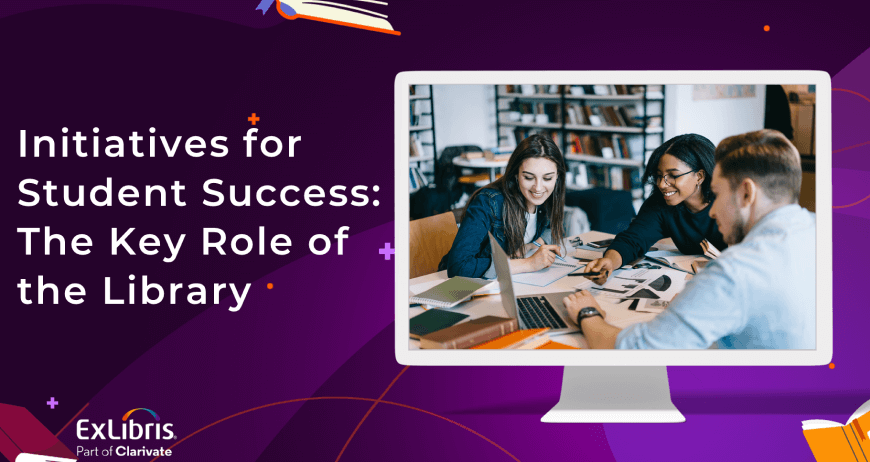Consider everything that an academic library does to foster student success. The library makes rich academic resources available, delivers the tools to find those resources, offers information literacy instruction, and in general assists students in their efforts to turn newfound knowledge into scholarly coursework. Yet, a recent survey of 135 academic librarians in the U.S.1 found that when higher education institutions embark on formal programs to foster student success, the library is more often on the outside looking in.
“Universities are interested in retention, student learning, and assessment of outcomes. Leganto offers metrics and data that show how we are contributing to these processes, and can suggest ways to improve student engagement with course materials. It provides a foothold, and allows us to demonstrate our contribution to the overall goals of the university.” University of St. Thomas, MN, USA.
Among the findings:
- In all, 88 percent of academic librarians say their institution has a student success initiative in place
- 134 of 135 (that’s 99.3%) say the library should play a key role in that initiative
- Only 40% report that their library has any role in the initiative at all
According to the survey respondents, the provost’s office or individual academic departments are more likely to be involved than the library. Moreover:
- Only 15% say the library is closely involved in both the creation and implementation of the student success initiative
- 44% said the library is less involved with creation, but is involved with implementation
- 41% say the library is not involved in either
When libraries are involved, it is in their traditional roles of training students in resource use and providing physical study spaces. Yet as we’ll explain below, the library has a key — and in fact, vital — contribution to make.
Measuring student success
Of course, part of putting a program in place for improving student success is being able to measure it. Around 90% of librarians report that their institutions use student retention and graduation rates as measures of success, and around 60% use grades and rate of post-graduation employment. These are sensible, easy to measure, and as good as anything for tracking broad outcomes. Some libraries do gather their own data about their contribution to student success, and the data points typically include use of library resources, services or physical spaces.
None of the above data points answer the most-relevant questions: if students aren’t succeeding, where and why are they falling short, and what can be done to help them improve? Of course there are many factors that drive student success, including how much time they devote, attitude toward school, pressures from the non-academic parts of their life, and many, many others. But perhaps the most basic question is this: Are they engaged in their classes?
Student use of course materials: metrics that matter
A different survey — of more than 100 faculty and 250 students at U.S.-based universities2 — assessed experiences with managing, accessing and using course materials. The picture that emerges is that students find it difficult to access the materials they need to complete their coursework, and that faculty lack meaningful insight into the engagement of their students. Among the findings:
Faculty are on their own when it comes to managing course materials. The overwhelming majority (85%) are responsible for selecting course materials, and they do all the related work by themselves. When finding materials, they use general web searches (78%), recommendations from peers (76%), and draw from their own research interests (69%). Less than half (46%) use the library.
Students struggle with finding and accessing course materials. They report encountering broken links (46%), being unable to find the materials online (44%), difficulties in engaging with the materials online (39%), and materials incompatible with their mobile devices (36%). When asked how many of the materials they read or complete, one third of students say they complete them all, one third say more than half but not all, and one third complete less than half.
Course material costs are a major barrier to student success. The majority of students (56%) say that the high cost of materials is a barrier to their success, 59% say the cost of materials is an important factor in selecting which courses to take, and 36% have opted not to take a course because the materials cost is too high.
Faculty want to know if students are engaging but lack metrics. They rely mostly on indirect observations and measures: student participation in class (89%), or quizzes and tests (70%).
Leganto, the Ex Libris list management system, solves the problems that students and faculty identified. More importantly, Leganto is a rich source of metrics about student use of course materials and insight into levels of student engagement. This data is extremely relevant for any initiative regarding student success.
Leganto data: powerful predictors of student success
The data that comes from Leganto is unique in the library world, and is far more relevant than counting visits to the library building. Data on whether or not students interact with course materials can help with identifying students at risk, before they fail. Several years ago, Ex Libris worked with Curtin University to find correlations between engagement with course materials and student success in their courses. We found out that while there are other relevant factors, the data extracted from Leganto has significant weight in the ability to correctly predict success or failure.
“We have a vision for how the library can help the university, and Leganto has facilitated our ability to provide that help. Every course that uses Leganto aligns us much better with the university. It positions the library closer to courses, curriculum, faculty, and student learning. Leganto helps us operate at a university level, contributing toward the university’s goals.” University of St. Thomas. MN, USA
Explore the entire Ex Libris library software.










